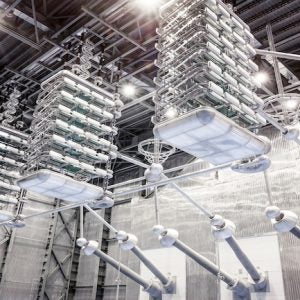
A new report ‘Study on small modular reactor technology and its impact for Indiana’ from Purdue University and prepared for the Indiana Office of Energy Development indicates that the state has ‘substantial opportunities’ for meeting energy demands by using eight current or former coal sites to produce nuclear power. Currently, Indiana has no nuclear power plants.
Purdue studied SMRs as ‘24/7 dispatchable sources’ of carbon-free power that can generate up to 500 MW, and finds that the smaller reactors offer ‘scalable energy solutions’ with better safety features than traditional nuclear power plants.
Purdue officials announced in May that the university was selected to study small nuclear technology and how it can potentially be used to power Indiana in the future; it had previously released a separate study on nuclear energy feasibility at its West Lafayette campus.
The IAEA (International Atomic Energy Agency) cites a lower range, qualifying SMRs as producing under 300 megawatts. Indiana law defines SMR power capacity up to 470 megawatts. The federal government hasn’t settled on a firm definition.
At present, no electricity-generating nuclear power plants exist in the state, though there is one major nuclear manufacturing facility located in Mount Vernon, in southwestern Indiana. And of the few projected SMR sites across the USA – and the world – none are currently operational, although major Indiana employer Rolls-Royce is currently developing an SMR.
Much of Indiana’s electricity continues to come from coal, and state lawmakers have been slow to commit to other energy options. Proponents say the new technology is cheaper and safer than larger nuclear reactors currently in use today, opposing factions say that upfront adoption costs can balloon, and some scientists and environmental groups are concerned that operating expenses are actually much higher, and worry that SMR plants are more dangerous than developers say.
Even so, Purdue researchers said SMRs are a missed opportunity, and that coal-to-nuclear could help Indiana tap into an energy supply – with the benefit of net-zero carbon emissions.
‘SMRs present a viable opportunity for Indiana to transition to a cleaner, resilient, and diversified energy future’ researchers said in the study. ‘By addressing the outlined challenges – construction costs, supply chain constraints, regulatory compliance, workforce training, and community engagement – Indiana could position itself as a leader in next-generation nuclear technology while creating economic opportunities and ensuring energy security.”
The total amount of electricity generated within Indiana has fallen by 26% over the past two decades, the study noted. Electricity consumption, however, has only decreased by 3% over the same time period. In 2023, Indiana was the nation’s second-largest coal consumer, after Texas, according to the US Energy Information Administration. Coal fuelled 45% of Indiana’s electricity net generation that year, the seventh-highest share of any state.






